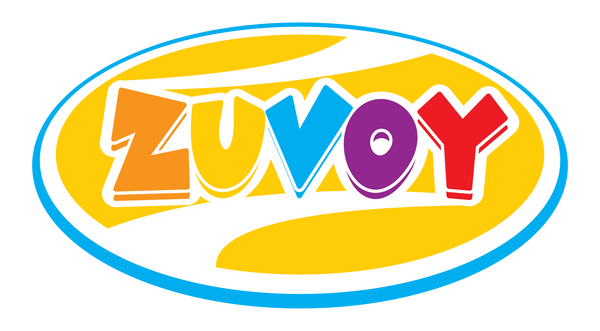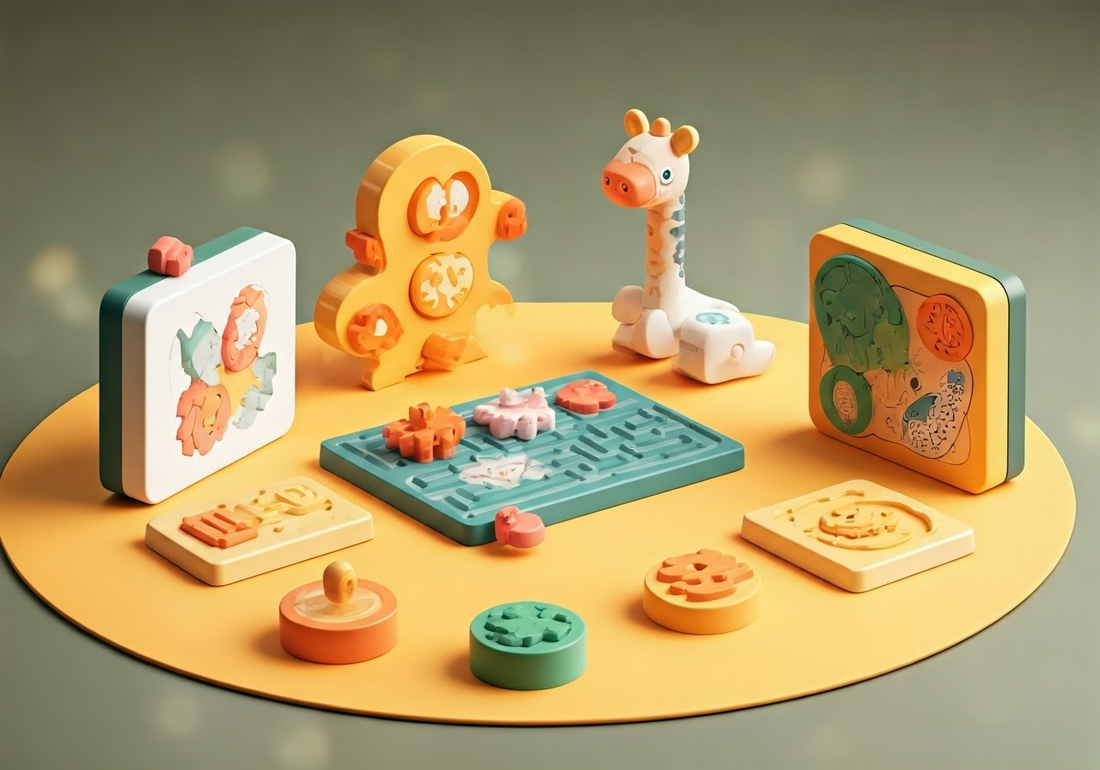Key Highlights
- Discover the world of interactive puzzle toys for children.
- Explore a variety of options, from 3D puzzles to augmented reality experiences.
- Understand the developmental benefits of puzzle-solving for kids.
- Find age-appropriate puzzle toys to challenge and engage young minds.
- Encourage critical thinking, problem-solving, and creativity through play.
Introduction
In today's screen-focused world, it is very important to give children toys that engage both their minds and bodies. Interactive puzzle toys are a great way to help kids develop fine motor skills, critical thinking, and creative thinking. Plus, they offer hours of fun.
These toys turn learning into an exciting adventure, making it enjoyable for kids of all ages.
Creative Puzzle Toy Ideas for Children of Every Age
 Finding the right puzzle toy can be a fun challenge. Fortunately, there are many options for different ages and interests. Some puzzles help with problem-solving and strategy. Others are great for improving spatial skills and hand-eye coordination.
Finding the right puzzle toy can be a fun challenge. Fortunately, there are many options for different ages and interests. Some puzzles help with problem-solving and strategy. Others are great for improving spatial skills and hand-eye coordination.
What’s great about these toys is they can change and grow as a child’s skills develop. This way, they provide a fun and interesting experience during playtime.
1. 3D Wooden Animal Puzzles for Ages 5+
These puzzles bring animals to life with bright and fun designs. Wooden puzzles for kids, especially those focusing on animals, are great for little hands. Kids can discover different animal shapes, learn about how they look inside, and improve their skills by fitting the pieces together.
Using natural materials like wood makes them look good and ensures they are strong and safe for kids to play with. Wooden toys for kids are a classic option. Their long-lasting nature and timeless charm keep them popular among parents and teachers.
Also, when a child finishes a 3D puzzle, it gives them a real sense of achievement. This can raise their self-esteem and inspire them to keep trying. It’s a great way to blend fun with learning.
2. Magnetic Maze Puzzles for Ages 3+
Perfect for little hands, magnetic maze puzzles let toddlers move small magnetic balls through a maze. These fun puzzles help build fine motor skills, hand-eye coordination, and problem-solving skills.
The magnetic feature adds excitement. Kids can try different ways to get the objects to the end.
Bright colors and fun themes, like animals or vehicles, make the playtime more enjoyable and keep children entertained.
3. Coding Puzzles for Kids Ages 8+
Introducing kids to coding can be fun and rewarding. Coding puzzles for kids provide a way to learn programming concepts while playing. These puzzles usually use physical pieces that kids must arrange in the right order to make a program that solves a problem or finishes a task.
As children solve the puzzles, they build their critical thinking and creative thinking skills. They also improve their logic and problem-solving abilities.
When they create a working program, they feel a sense of achievement. This helps them enjoy STEM activities more.
4. Interlocking Blocks and Gears Sets for Ages 4+
Interlocking blocks and gear sets have been popular in kids' toy boxes for many years, and there is a good reason for that. These toys provide endless ways to be creative, build, and learn. Kids as young as four can start to learn about engineering and mechanics using age 3 wooden toys as they try out different block shapes and gear setups.
Building towers, bridges, or anything else they can think of helps them improve their fine motor skills and understand space better. Adding gears teaches them about cause and effect, allowing them to see the results of what they do.
These sets promote trying new things, solving problems, and working together. They are a great choice for playing alone or in a group.
5. Augmented Reality Puzzles for Ages 7+
Augmented reality (AR) puzzles bring something new to regular puzzles. They mix physical pieces with fun digital content. Kids can use a smartphone or tablet to see their finished puzzles come alive. They will enjoy animations, sound effects, and even mini-games.
This blend of technology and hands-on play makes puzzling more fun. It helps kids with creative thinking and critical thinking. They can look at things in different ways, solve problems in the AR world, and connect more with the puzzle.
AR puzzles also offer a lot of fun for learning and play. They are a great addition to any kid's toy collection.
What are the benefits of puzzle toys for boys and girls?
Puzzle toys for boys and girls offer cognitive benefits by improving problem-solving skills, enhancing memory and concentration, and fostering creativity and critical thinking. They also promote fine motor skills and hand-eye coordination while providing an engaging and fun way for kids to learn and grow.
The Benefits of Puzzle Solving in Child Development
 Puzzle toys do more than just provide fun; they are important for a child's growth. They are not just toys for play but helpful tools that support thinking, social skills, and emotional health. Working on puzzles, even the hard ones, helps children improve their problem-solving skills, how they see space, and how flexible their thinking is.
Puzzle toys do more than just provide fun; they are important for a child's growth. They are not just toys for play but helpful tools that support thinking, social skills, and emotional health. Working on puzzles, even the hard ones, helps children improve their problem-solving skills, how they see space, and how flexible their thinking is.
When kids play with puzzles, they feel proud of what they achieve. This raises their self-esteem and inspires them to tackle new challenges with a positive outlook.
Enhancing Problem-Solving Skills
At the center of every puzzle is a problem that needs to be solved. This could mean putting together strange-shaped pieces, finding your way through a maze, or writing code. Puzzles help kids think critically. They also teach kids how to come up with strategies to get past challenges. This practice of trying things out and learning from mistakes is key to building problem-solving skills.
Kids learn to look for patterns, see how different parts relate to each other, and think ahead to find answers. Being able to break down a problem into smaller and easier steps is a useful skill that is important in many parts of life, not just with puzzles.
When parents and teachers give kids different types of puzzles, they help them grow in thinking clearly, reasoning logically, and tackling challenges in smart ways.
Boosting Spatial Awareness
Spatial awareness is the ability to see and understand the world around us. This means knowing size, shape, and distance. It is an important skill for daily activities. We need it for things like finding our way, parking a car, or packing a suitcase.
Puzzles that require moving shapes, like jigsaw puzzles, 3D puzzles, and building blocks, help children grow their spatial awareness. These puzzles ask children to think about how shapes move, fit together, and relate to each other.
Doing these activities supports children in building strong spatial reasoning skills. It also boosts their hand-eye coordination. This skill helps them to better see and interact with their surroundings.
Encouraging Patience and Persistence
In today's world, it is very important to help children learn patience and persistence. Puzzles are great tools for this because they need both patience and persistence to solve.
There is a special feeling of success when a child fits the last piece of a puzzle or solves a difficult riddle. This success pushes kids to keep trying, even when things are hard.
They learn that the best rewards often need time and effort. Sticking with a task is key, especially when it becomes challenging. These important skills help them not just with puzzles but also with handling life's challenges.
Conclusion
In conclusion, interactive puzzle toys are very important for child development. They help improve problem-solving skills, spatial awareness, patience, and persistence. When children engage in creative and fun puzzles that suit their age, they can gain many benefits. As they tackle the challenges of these toys, they have fun while also developing key cognitive skills. To encourage your child's growth and learning, add these engaging puzzle toys to their playtime. Embrace the fun of learning through play!
Frequently Asked Questions
What age group benefits most from puzzle toys?
Children of every age gain from puzzle toys. Toddlers can grow their fine motor skills. Older kids can work on critical thinking and creative thinking by solving riddles and tackling complex puzzles.
How can puzzles be integrated into daily learning?
Puzzles can be a fun part of learning time. You can use a wooden bricks puzzle to teach math ideas. Riddles can help increase creative thinking. Logic puzzles can make your critical thinking and problem-solving skills even better.
Are there interactive puzzles suitable for outdoor play?
Sure! Large wooden puzzles for kids or wooden toys made for kids age 3 can make outdoor time fun and interesting. You can use them for activities like riddles or scavenger hunts. This way, time spent outside becomes an exciting and meaningful experience.

